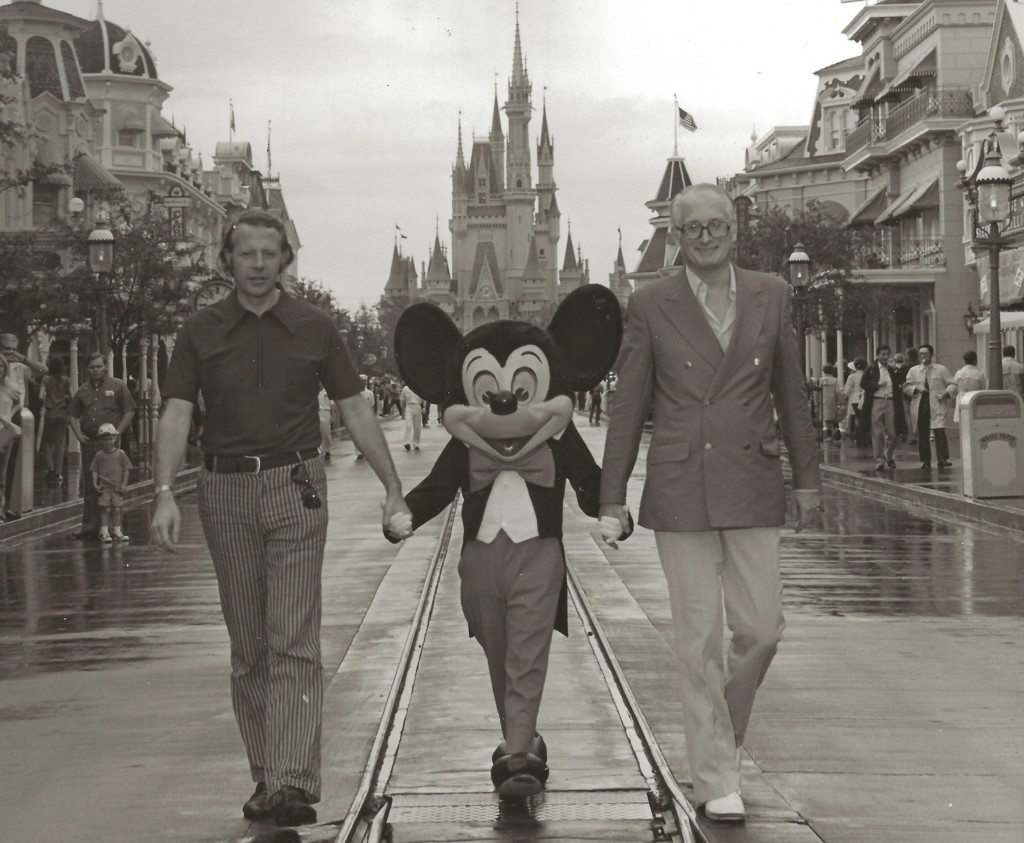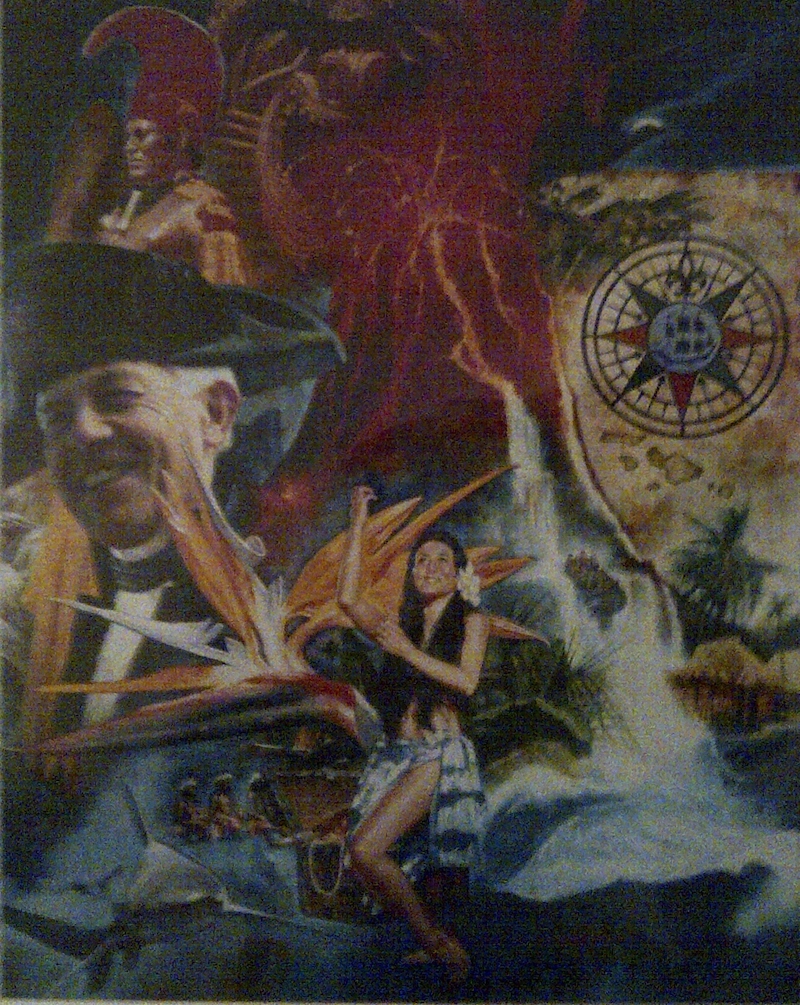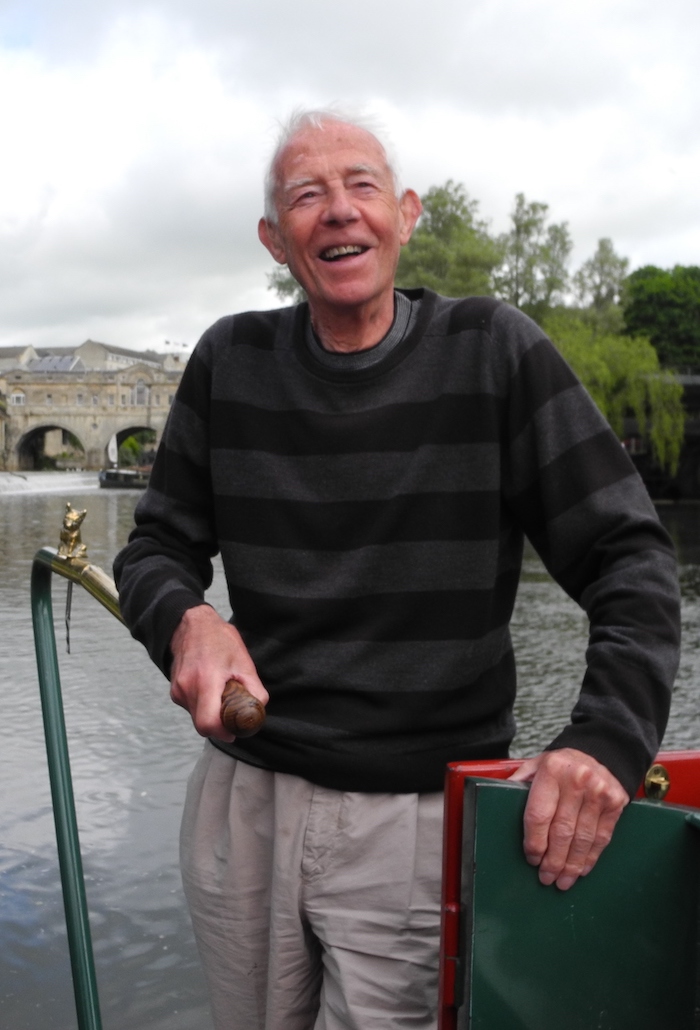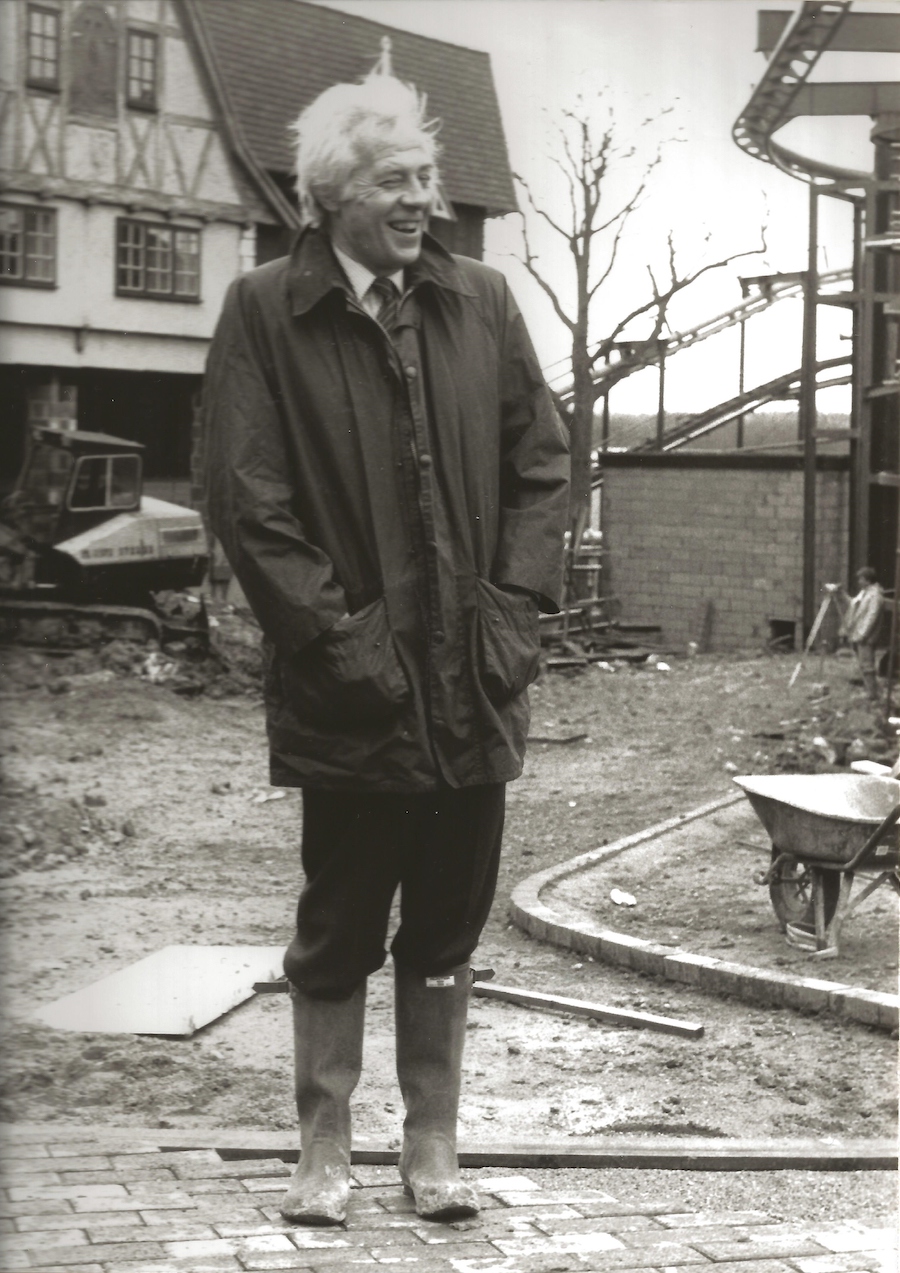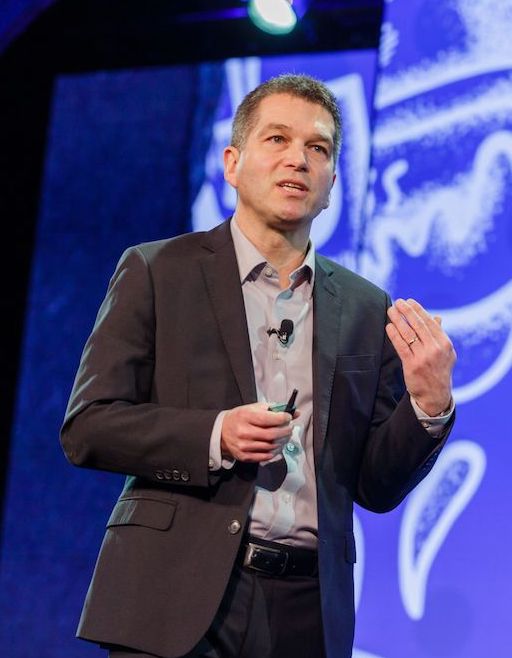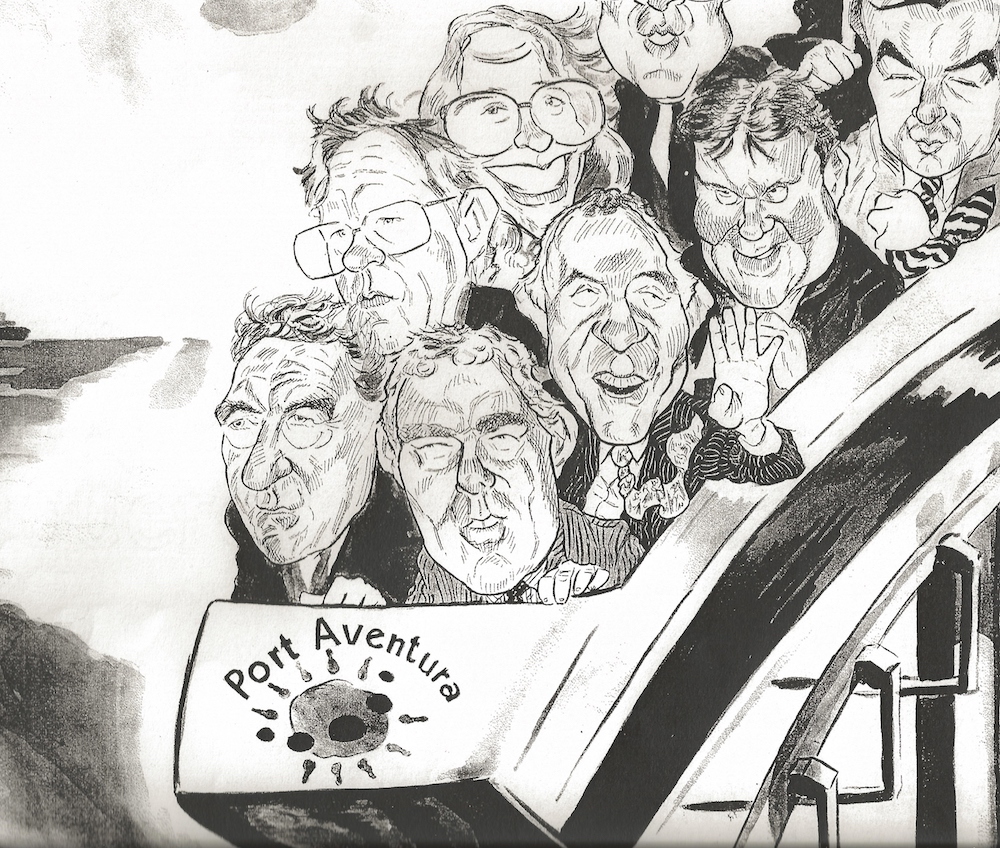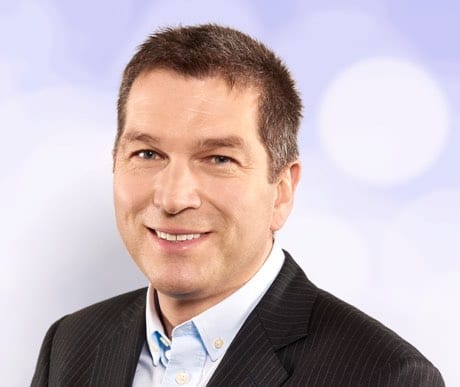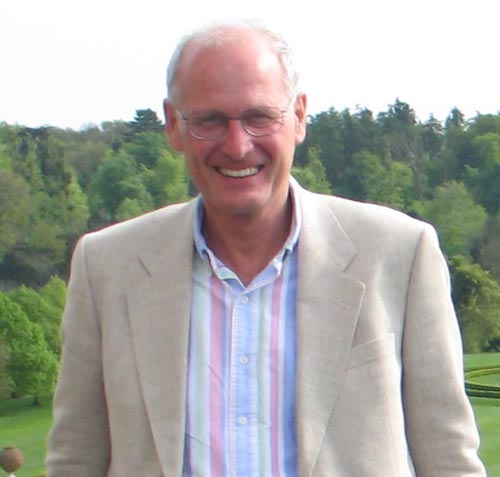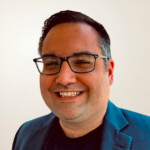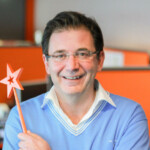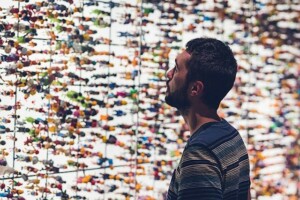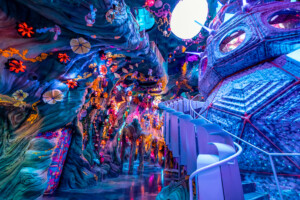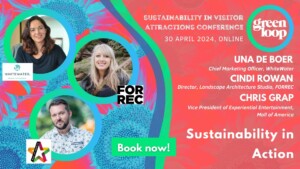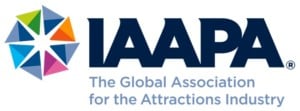If you haven’t thought of doing this, I highly recommend it; it occupied several afternoons and covered a lot more than just work, but so much of what he said was new to me.
By Martin Barratt
My father, Ray Barratt, was an accountant by training, but accountancy could never contain him. It turned out that his talent was picking good people and letting them do great work. His accountancy background ensured that their ambitions never overran the budget. As all those involved in project development know, that is the recipe for happiness.
Charlie and Rachel very kindly agreed to republish the article because my father died last week. He was ill for 18 months after falling over whilst gardening. He broke his hip, had a heart attack and developed pneumonia in the space of a week. So he was in a nursing home while we worked on adapting his house for his reduced mobility. It has been a hard few months because we couldn’t visit him through the lockdown. But last Thursday I was able see him for an hour. A couple of hours after I left he died of a heart attack.
So I dedicate the interview that follows to the memory of my father. I know from his accomplishments and so many stories from his friends and colleagues that he was a major force in the development of our industry. He was also a great Dad and Grandfather and we will miss him terribly.
Martin Barratt.
Ray Barratt (13 Nov 1931 to 25 June 2020) played a significant part in the development of the theme park industry in the UK and Europe.
In his 27 year career in the visitor attractions industry he ran stately homes, developed safari parks, directed leisure and cultural destinations and introduced theme parks to the Tussauds Group. Here, Ray Barratt talks to his son Martin, who got his start in the attractions business working weekends at Woburn Abbey.
How did you start your career?
I started as an accountant. I left school at 16 and one of my teachers said that since I was good at maths I should be able to get a job at an accountancy firm which was recruiting. My father was a bit dubious; he thought it might be something to do with bookies, but I went for the interview and I got the job. I was a bit vague about what an accountant did until I started.
It wasn’t very easy to get a qualification. I bought a correspondence course and studied at home at the same time as helping my wife to bring up a young family. Once I qualified I moved to Cambridge, working for a firm of accountants. The time there confirmed for me that I would be happier working in industry and I moved to Rugby and worked for different manufacturing firms.
How did you move into the attractions industry?
Although I enjoyed being an accountant I always felt that there was something else out there I would rather do. I looked through newspaper adverts and eventually found one that said that Woburn were looking for a Manager to run the Abbey. I knew that this was different from other jobs because my wife was invited to attend the interview with me. Clearly they felt that the amount of commitment that was needed would require the support of all my family and in this they were right! Very soon my wife was fully involved with the Abbey too, running the shops and the art gallery, as well as organising art classes in the village.
I arrived there in 1968. I loved the job; such a different life in an environment I hardly knew existed. The Duke and Duchess were very involved in running the attraction and were very commercially minded. They knew that visitors loved to see them and they would always be there on busy days, signing books and chatting to people.
Whose idea was it to develop the Animal Kingdom?
One day I had a call from Jimmy Chipperfield asking if I thought the Duke would be amenable to having a safari park at Woburn. I was in favour of it as we were looking for a way to increase the income from the business. We were concerned that the new park shouldn’t dominate the Abbey so it was sited on a different part of the estate, some distance away.
It opened in 1970 and was a great success. Not only did a substantial number of new visitors come to the Safari Park; the attendance at the abbey increased significantly as well. It brought some problems; Woburn village was often choked up with queues of cars, which wasn’t popular with the locals. We worked closely with the local council to develop strategies to cope with the extra traffic.
At this time we employed an assistant manager so I could spend more time on the development of the Animal Kingdom. I worked closely with Richard Chipperfield who represented his father Jimmy. The Duke and Duchess decided that they would retire in March 1973 and I left Woburn at the same time to work for a company set up to develop safari parks worldwide. (See below: Ray second from right, Richard Chipperfield fourth from right, hosting Japanese visitors to Woburn 1973.)

What was the new company called?
It was called Wild Animal Kingdoms Ltd. and was an associate company of Hardwicke, based in New York and Miami. Between 1973 and 1976 we built parks in Spain, Germany and Japan and assisted Hardwicke with parks they had built in the UK and the US.
In the second half of the 70s the price of petrol rose dramatically and that damaged the safari park model. As a result investing in safari parks became less attractive. The American owners of the company were becoming more insistent that I should relocate to the States and I was finding the amount of travel I had to do was affecting my family life, so I very reluctantly decided to find a job in England.
Were there many opportunities at that time?
I looked at a few, but settled on a job in Bath as Director of Leisure and Tourism. I spent five years there and we introduced a number of new initiatives and the tourist numbers grew. Being back in England re-established me in the UK attractions industry and gave me more opportunities when the time came to move on.
So why did you leave Bath?
It was never my intention to stay for a long time in the public sector, then when I was at a local government conference a chap there said “you know, you are in a very good position to get the leisure job at a famous seaside town the next time it comes up”. I asked him why I should be interested and he explained that the perceived top job in our sector was to run leisure and tourism there and if I played my cards right I could get it. That wasn’t how I saw my future and it made me think it was time to look for something else. (See right: Ray Barratt returning to Bath by boat this year.)
Whilst I was in Bath I met Graham Jackson who was a Director of Madame Tussauds and managed Wookey Hole, as well as a number of other attractions. We met two or three times a year and talked about how we could grow visitor numbers to his attraction and to the City. When he heard I was intending to leave Bath he suggested that there might be an opportunity for me at Tussauds.
I met the other Directors and got on with them very well and they offered me the job of developing and acquiring new attractions.
What were your priorities once you had joined Tussauds?
I knew that Pearson, Tussauds parent group, regarded us as being too ‘bitty’; they wanted us to concentrate on fewer attractions, but of a larger scale. One way to do this was to develop Chessington Zoo. The zoo had been owned by Pearson since 1946 and in 1978 Tussauds approached them with a view to buy it. Instead Pearson decided to buy Tussauds who then were given control of the Zoo.
After a year or so I was put in charge of Chessington, along with Wookey Hole and some smaller businesses, with the idea that I would develop it into a much larger attraction. My first task was to turn it into an asset rather than a liability, which meant a large scale reorganisation. I couldn’t have done this without the full support of Nigel Martin, the General Manager, who used his considerable people management skills to push through the changes without demoralising the park management team.
It was obvious that it would take more than this to turn the business around in the long term. We therefore decided that the way forward was to develop a theme park to run alongside the zoo. I decided the best thing I could do was assemble a team of people who had been successful in the attractions business and come up with a development strategy.
Ray Barratt assembles a great team at Chessington
I met John Wardley at a meeting at Tussauds Studios. John had worked on Royalty & Empire in Windsor and when I met him and heard his ideas I knew he would be an important member of the team. He was great friends with John Collins. John was one of the most experienced attraction operators in the country and who I had met a number of times. It seemed like a great idea to involve him too.
We found the next member of the team when I was invited to attend a presentation about a potential new attraction near Newbury and I invited John Wardley to come along too. It was being presented by a most articulate, enthusiastic and talented architect called Andy Nichols and both John and I agreed he was someone we would like to work with.
As our plans developed we were joined by Peter Barber, a remarkably experienced civil engineer who I met while he was working with Longleat, and who then helped with the development of Woburn Animal Kingdom. I was very glad that he was able to help me at Chessington.
It was a great team. John Wardley was imaginative and enthusiastic as well as being exceptionally good at adapting ideas into something we could afford; Andy put his concepts onto paper and was very persuasive with stakeholders and planners and Peter made sure it was built to plan and affordable. John Collins contributed his vast experience of ride acquisition and park operations.
Opening Chessington World of Adventures
Our idea was to create a family theme park for the South of England. We knew that people were travelling to Alton Towers from all over London. So we thought if we could capture those from the South we could be successful. This was before the days of the M25, and it was just as difficult for North Londoners to get to Chessington as it was for them to get to the Towers.
I took the plans to the Tussauds board who managed to hide their shock at the costs very well. We needed nearly £6 million, an enormous sum in those days. The Pearson Board understood Chessington very well and it was their enthusiasm and appreciation of its potential that persuaded them to give us the money we needed.
We knew that getting planning permission was difficult. At that time we had not only the local council, but the Greater London Council as well. The local council were very supportive. The GLC came onside once they realised that we had developed our plans very carefully for the English market, and this wasn’t just an American concept grafted onto a London attraction.
We opened Chessington World of Adventures in 1987 and it was an immediate success, although success brought its own problems. Very quickly we agreed a limit of 15 thousand people a day. On some very busy days we reached that limit by 11am. Traffic was always a problem at Chessington with the front gate being on a busy road. But because it was such a success we immediately began thinking what other investments we could make to grow the capacity and at the same time satisfy the planners. (pictured: onsite during the development of Transylvania and The Vampire 1990.)
A sound business philosophy
The Managing Director, Michael Herbert took the view that he employed someone he could trust to get the job done rather than managing by decree. Once you gained his trust he would leave you to get on with it. This is a business philosophy I liked very much. He said to me, “I don’t want to be told anything about what is happening in the parks by Pearson unless I’ve heard it from you first.” He gave me the opportunity to accomplish great things. He was also always supportive throughout the process.
By this time of course Pearson and the local council were very positive because they could see the potential. We knew that we had limits to our growth because of Chessington’s location in the green belt. Local opposition had also grown because of traffic issues. However, we added attractions to give better value to the visitors we already had.
How did the acquisition of Alton Towers come about?
Chessington had got to the stage where there was not much more we could do because of planning constraints. We thought there was potential to develop a theme park North of London. This wouldn’t affect Chessington too much, but it would affect Alton Towers. Our idea was to add an attraction to Woburn, to sit alongside the Abbey and the safari park. But we came to the conclusion that there would be too much opposition to build a large theme park at Woburn, so we started thinking about acquiring Alton Towers.
Ray Barratt on Alton Towers
I spent some time at the Towers working out what would have to be done to improve it to a standard that would be acceptable to Tussauds. It needed investment to increase the size and quality of the rides and tidy up the park. We wanted to go ahead and buy it because that would give us the two biggest family attractions in the UK.
At the same time we were considering buying parks in France and Germany. However, we certainly preferred the idea of acquiring another park in the UK first. Then in 1989 we started hearing from Pearson that Battersea was in need of more funding. They said that if they didn’t get it there would be the possibility of the Towers being put up for sale. We spent a long time discussing what the price should be before we came to an agreement.
So what were your first priorities?
Getting rid of some of the smaller rides and attractions which were not up to the standard we required and which contributed little to the visitor experience. We had already worked out what new rides we wanted to introduce. So our next task was to persuade Pearson to give us the money we needed before we had started to grow the visitor numbers. They weren’t keen to do that, but because we had proved ourselves at Chessington they decided to back us.
At the time we thought the marketing effort could be improved and we decided on a complete reorganisation of the department. John Murphy was a marketing advisor to the Tussauds board and he started the search for a new Marketing Director. I interviewed the short listed candidates with John and I agreed that one of the best candidates was Nick Varney (right).
Nick Varney revolutionises the marketing
He was bright and full of enthusiasm. John said that he was one of the best marketing men he had ever interviewed. It took me ages to persuade Nick to join us. He had a very good career in a FMCG business, but he liked the idea of working in the attractions business. In the end he chose to take the job.
He set about reorganising the marketing effort. Very quickly he grasped the essentials of the business and found out what influence he could have. He revolutionised the marketing at Alton Towers and he was one of the main reasons that the numbers increased, which persuaded the Pearson Board that they should keep investing.
I was talking to Michael about whether we were going to expand further, or whether we should stick with what we already had. We were looking for new opportunities all over Europe. Then we heard from Lazards, the investment bank then owned by Pearson. They told us that a park being developed by Anheuser Busch South of Barcelona was looking for investment partners.
Investing in Port Aventura
Michael Herbert and I met with people from Anheuser Busch at Alton Towers. At that time the development looked very positive. The finance was in place and they had started developing, but things soon started to go wrong. One of the investors dropped out and we were approached to take his place.
Eventually we agreed to be both an investor and the operator of the park which became Port Aventura. (See above: Some of the team which negotiated Tussauds involvement in Port Aventura. Michael Herbert is front left, Ray is second row right waving.)
Was the park design finalised by then?
It was to a large degree, but the contract for the major coaster wasn’t signed. I said to John Collins that we had such a great connection with Bolliger & Mabillard, maybe we should work with them again. John agreed and although the ride cost more we felt much more confident in B&M’s ability to deliver it. Dragon Khan was a much bigger and better ride than the one which was initially envisaged. As a result, it became the stand out attraction of the park.
We had an influence on lots of other things. However, not on the other rides, since the contracts had already been signed. Once Port Aventura was built all my team were involved to some extent in improving the park. However, during development I was helped primarily by John Collins, who made a huge contribution to the parks eventual success.
A sense of arrival
We opened the park on time and under budget. We did so to such an extent that I was able to build the fountain in the entrance piazza. This had been taken out of the scheme because it was thought not to be essential. I thought it was important to build it because I had always been impressed by parks that had a spectacular feature outside the gates. They give a sense of arrival.
It opened on May 1st 1995. Initially we didn’t make the forecast numbers, but our Spanish partners said “Don’t worry; the numbers are always high in spring and autumn and drop in summer”. This was just the opposite of what we were used to in Northern Europe.
Nevertheless John Collins and I walked around less than full car parks in July. We were very doubtful we would get anywhere near the budget. Then we hit September and October and the numbers coming in were fantastic. In the end we beat the budget for the year, even though we had lost a large part of the spring season. (pictured: Ray and John just prior to opening.)
Which project are you most proud of?
I really have to mention two. Firstly Chessington World of Adventures. Developing Chessington was the reason for assembling such a great team. They were a delight to work with and without them we wouldn’t have achieved nearly so much. We all learnt a tremendous amount from our first project working together. Without its success I would never have been involved with Alton Towers or Port Aventura.
Secondly Port Aventura. I knew that was where I would finish my career. Furthermore, I really enjoyed living in Spain and delivering the project. The build-up to opening was the most satisfactory time of my career. I enjoyed living and working in Spain. My wife was also able to be with me a lot of the time I was there. There were also very obvious advantages for my children and their young families; having somewhere to stay next to lovely beaches and a wonderful theme park. (See below: Ray Barratt in the Mexican area of Port Aventura with wife Enid and one of his grandchildren.)
What is the key to delivering a successful project?
First of all, build a team you can trust and rely on. Then fully explore the risks and make as sure as you can that it will succeed. Remember at the start of the project that at the end you want to feel proud of what you have accomplished. So don’t compromise on the things that are important. Of course my accountancy background meant that I kept my eye on the finance and tried to make sure that eventually each project reached or beat its targets.
Then once the project is finished, find out regularly what the paying visitors think about it. Also, don’t be afraid to make changes when you find that things are not working as expected. Amongst much else I learnt this from Luis Rullan, who came to manage Port Aventura after a career in the hotel industry and who I still consider to be the best manager I ever worked with. His enthusiasm to be the best and his determination to get things right was infectious and produced exceptional results.
But the most important thing is the quality of the people you surround yourself with. I was lucky enough to work with some very talented and dedicated people, the core team of John Wardley, John Collins, Andy Nichols and Peter Barber, Nigel Martin and Robin Dunham at Chessington, Andrew Hollingsworth and Nick Varney at Alton Towers, Luis Rullan at Port Aventura. It was a privilege to work with them and accomplish such great things.
Remembering Ray Barratt
“The remarkable thing about RayBarratt was how, given his original background in accountancy, he understood and encouraged the creative process whether in the development of new attraction experiences or the marketing campaigns which communicated them. It is a well-known feature of the creative industries that driving talented and highly driven individuals, all with very strong opinions (!), to the same end purpose can be like herding cats. Ray managed this with considerable success. He did this by making everyone involved feel they were part of a very special team.”
— Nick Varney
“Ray Barratt is one of the most inspirational people I’ve ever met. He had a knack of pulling together teams of experts in their fields, letting them do their job without unnecessary interference, and leading those teams forward to bring projects to fruition. I have the greatest of respect and affection for Ray. His kindness and constancy towards me is something I will always remember.”
— John Wardley
“I had worked with Ray Barratt on several projects for the Tussauds Group. These included Chessington World of Adventures and Alton Towers. In 1993 Ray asked me to help him with a potential project in Spain. The plans had hit some problems and the Tussauds Group had been approached by the shareholders with a proposition. This involved the Group taking a substantial shareholding and management of the project.
“Our first impressions were that it was the project from Hell. Pearson, the owner of the Tussauds Group was playing hardball with the investors to secure the best deal. It was too late to make changes to the design of the park as civils had just commenced.With all of this Ray, completely undeterred and with his true Northern doggedness and his abundant skills set about solving the problems.
“The Park opened on time and under budget. It was an instant success entertaining substantially more visitors in the first year than had been forecast. Port Aventura and its continuing success is a testament to a gifted man. The experience for me working with Ray on this major new build theme park, seeing it come out of the ground and being involved in the opening was one of the most exciting and rewarding commercial experiences of my life.”
— John Collins
“Ray Barratt was quite simply the best boss I ever had. I miss him even today, years after he retired. He knew instinctively how to put a good team together and then seemed to let them get on with it. He gave subtle nudges along the way to make sure everything stayed on track.
We helped him deliver a string of outstanding projects. These included the acquisition of Alton Towers and its subsequent development with things like Nemesis and the Alton Towers Hotel, the Kingmaker at Warwick Castle and the acquisition of Port Aventura as a project in construction and its subsequent very successful opening.”
